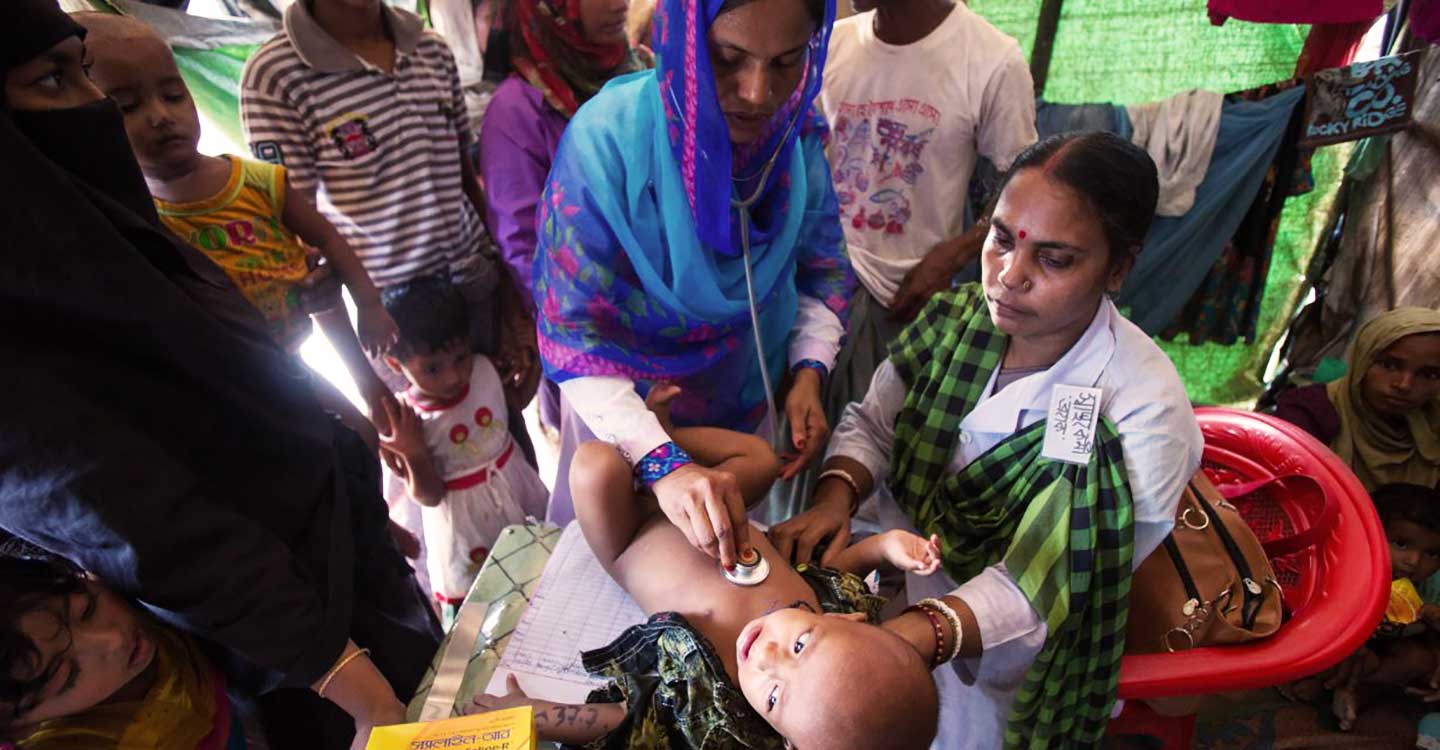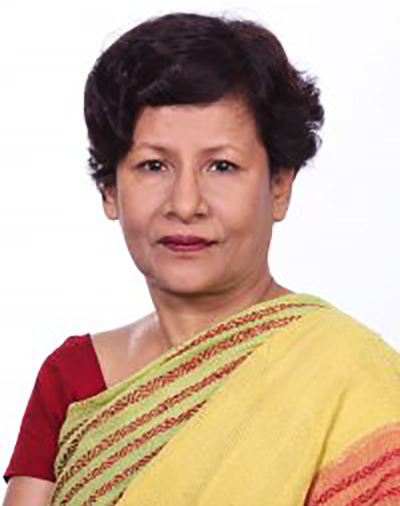How do you and your organisation support the health of refugees?
Our main focus initially was on water, sanitation and hygiene, health, and setting up child friendly spaces. As more and more people arrived we rapidly scaled up. We are now the biggest civil society responder on the ground and working in every sector of the response, including shelter, health, WASH, disaster risk reduction, connecting with communities, education, protection, agriculture and environment and site management. We have over 1600 staff on the ground.
In terms of supporting health, we have a comprehensive approach that includes facilities in fixed locations, mobile facilities and community health workers who go door-to-door across the camps and settlements. We are particularly focusing on primary healthcare, health promotion and community mobilisation, nutrition, family planning and vaccination.
The first oral cholera vaccination campaign that ran in the camps and settlements was the second largest in the world. It was carried out through a collaborative approach, led by the Ministry of Health and supported by a number of international partners. Over 900,000 vaccinations were mobilised through 200 mobile vaccination teams. BRAC staff made up a significant number of the teams. We also worked closely with Government to ensure that the diphtheria vaccination campaign was successful. Our community health workers and paramedics received government-led training to administer vaccines and a potentially major outbreak was avoided.
In addition to campaigns, our health workers provide routine immunisations at our facilities in fixed locations and our community health workers visit door-to-door to look for symptoms of TB and malaria and carry out rapid diagnostic tests.
Why is it important to vaccinate refugees?
There are two main reasons – to prevent disease outbreaks in the guest population and to provide protection for the host community as well as the guest population. Currently, 78% of Bangladesh’s population is covered by vaccinations so the host community is vulnerable to outbreaks as well. Both populations, and any staff, must be vaccinated.
The Rohingya do not have health-seeking behaviour because they have barely ever had access to health services. The population is majorly unvaccinated, and most children have not received routine immunisations. The situation that we are facing similar to what we tackled in Bangladesh in the 80s, when the nation-wide vaccine coverage rate was 2%. BRAC supported the government to raise the rate to what it is currently – 78%. We are implementing a similar community mobilisation model as what we did in the 80s, so we should see similar gains in a short amount of time.
In your experience, what are the key challenges to vaccination?
Identification – segmenting the population, finding people and sorting them into age groups – and keeping track of them. People are transient, moving between camps and settlements. The monsoon season will intensify movement, which makes it difficult to monitor people, ensure the flow of vaccines and establish that those in need are vaccinated. It is crucial to identify who is covered and who is not.
Supply chain management is another challenge – making sure we have the right amount of vaccines at the right time in the right places, both for outbreaks and for routine immunisations. Gavi played a really important role in supplying oral cholera and diphtheria vaccines. The focus now needs to be on ensuring a smooth flow of routine vaccines. Outreach centres need to be set up close to houses, so mothers can bring their babies for routine vaccinations quickly and easily.
Finally, demand creation is an issue – educating families on the importance of vaccination, the reasons why it is done and the broader danger to the community if people are not vaccinated. Superstitions and religious myths around vaccines are common, so we need to understand the social context, and work with community mobilisers and religious leaders. We need more trained community workers who can act as mobilisers and advocates, and religious leaders to motivate behaviour change. This should be a sustained, continuous process.
What progress are you hoping to see in Cox’s Bazar and beyond?
I want to see the change in health system and culture, to where vaccination is a priority. I have seen first-hand what a country can accomplish in this regard, through Bangladesh’s success, so I am confident that it can be achieved. With 68.5 million people displaced worldwide, we can no longer rely on short-term reactive humanitarian assistance approaches in situations such as this influx, but must instead be looking at longer-term development models.







